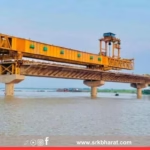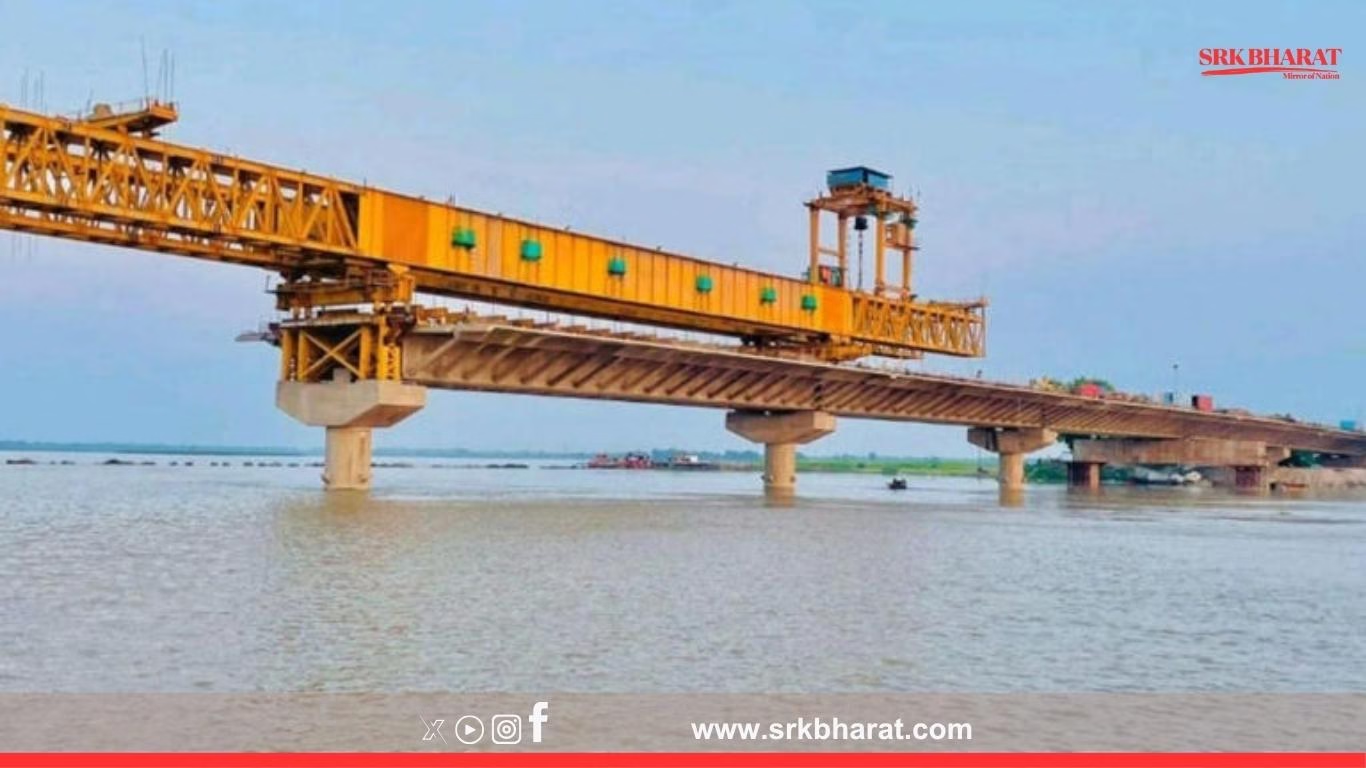As Bihar gears up for its upcoming assembly elections, a major infrastructure milestone is drawing national attention. The nearly completed construction of Asia’s longest river bridge over the Kosi River—an ambitious engineering marvel—has become a cornerstone of the state’s development narrative. With 80% of the project work completed, officials estimate that the bridge could be fully operational by the end of this year.
This monumental project, stretching across one of Bihar’s most challenging river systems, not only symbolizes progress but also promises to transform connectivity, economy, and disaster resilience in the region. As parties prepare for electoral battles, the bridge is emerging as a symbol of governance, vision, and regional pride.
The Kosi Mega Bridge Project: An Engineering Feat
The bridge, spanning over 10 kilometers, is set to become Asia’s longest river bridge, eclipsing several others in terms of river-span length. The construction began in 2020 and is being executed by a consortium of Indian infrastructure firms under the guidance of the National Highways Authority of India (NHAI).
The bridge is being built over the Kosi River, notoriously known as the “Sorrow of Bihar” due to its unpredictable course, history of devastating floods, and sediment-heavy flows. The bridge will connect Supaul district in North Bihar with Khagaria in South Bihar, significantly reducing travel time, boosting trade, and providing a much-needed alternative route for inter-state transport.
Key Highlights of the Project
| Specification | Details |
|---|---|
| Total Length | 10.2 km (Main bridge span over Kosi) |
| Connecting Highways | NH-107 and NH-31 |
| Total Project Cost | ₹3,800 crore (approx.) |
| Construction Start Year | 2020 |
| Target Completion Date | December 2025 (early completion likely) |
| Progress Till July 2025 | 80% completed |
| Type | 4-lane extradosed cable-stayed bridge |
| Expected Daily Traffic | Over 60,000 vehicles/day (post-launch) |
The Kosi Mega Bridge is being touted as a game-changer for flood-prone regions, where frequent disruptions in transport due to waterlogging and infrastructure damage have cost lives and livelihoods for decades.
Strategic Significance for Bihar
For decades, the people of Northern and Southern Bihar have struggled with poor connectivity across the Kosi river basin. The river’s erratic behavior has made traditional infrastructure unreliable. Currently, commuters often take a seven-hour detour to travel between towns that are just 70–80 km apart as the crow flies.
Once completed, the Kosi bridge will:
- Reduce travel time between Supaul and Khagaria to under 90 minutes.
- Boost movement of agricultural produce and perishable goods across the state.
- Improve access to healthcare, education, and government services.
- Strengthen regional disaster evacuation and flood response mechanisms.
- Connect Bihar to Northeast India via strategic corridors, improving interstate trade.
Additionally, the bridge will integrate more effectively with NH-31, NH-57, and the upcoming Eastern Freight Corridor, transforming Bihar into a vital logistical hub in Eastern India.
Political Optics Ahead of Elections
As the 2025 Bihar Assembly elections draw near, the ruling coalition is placing major focus on infrastructure as a demonstration of effective governance. Deputy Chief Minister Vijay Kumar Sinha recently stated that the “Kosi Bridge reflects the state’s resolve to modernize and uplift even the most remote districts of Bihar.”
Opposition parties have acknowledged the importance of the project but have questioned delays, cost overruns, and lack of simultaneous development in rural feeder roads. However, the near-completion of such a landmark bridge is expected to be one of the major talking points in election campaigns, particularly in the Kosi-Seemanchal and Mithilanchal regions.
Comparative Overview of Major Indian River Bridges
| Bridge Name | River | Length (km) | Location | Status |
|---|---|---|---|---|
| Kosi Mega Bridge | Kosi | 10.2 | Bihar | Under Construction (80%) |
| Dhola–Sadiya Bridge (Bhupen Hazarika Setu) | Lohit | 9.15 | Assam-Arunachal | Completed (2017) |
| Mahatma Gandhi Setu | Ganga | 5.75 | Bihar | Renovated (2020) |
| Bogibeel Bridge | Brahmaputra | 4.94 | Assam | Completed (2018) |
| Bandra-Worli Sea Link | Arabian Sea | 5.6 | Mumbai, Maharashtra | Completed (2009) |
When completed, the Kosi Mega Bridge will officially become India’s and Asia’s longest river bridge, making it a landmark in India’s infrastructure history.
Economic Impact on Kosi Region
The Kosi Basin is one of the most fertile yet underdeveloped areas in Bihar. Frequent flooding, inadequate roads, and seasonal isolation have made agriculture, trade, and education difficult. The new bridge is expected to bring:
- 30% increase in inter-district trade volume in the next 3 years.
- 40–50% improvement in perishable goods transport time, especially for crops like maize, jute, and vegetables.
- Creation of over 5,000 jobs during construction and nearly 1,000 permanent roles post-completion for toll, maintenance, logistics, and tourism.
- Improved connectivity to the Indo-Nepal border, enhancing cross-border trade in districts like Araria and Forbesganj.
Challenges and Mitigation
Despite its progress, the project has not been without obstacles:
- Monsoon-related construction delays, especially during flood season.
- Labor and material shortages during the COVID-19 pandemic.
- Land acquisition hurdles in connecting roads and relocation sites.
- Environmental and geological complexity due to Kosi’s meandering.
Project managers, however, have successfully adopted modular construction, pre-fabricated piers, and hydraulic monitoring systems to keep the work on track. The recent dry spell and heavy deployment of machinery have accelerated progress beyond projected timelines.
Voices From the Ground
Local residents and transporters in districts like Saharsa, Madhepura, and Khagaria have expressed cautious optimism. “We’ve waited for generations to cross the river without fear of getting stuck in floods. If this bridge really opens by year-end, it will change our lives,” said a resident of Supaul.
Business owners, especially in the trucking and farming sector, see this as an opportunity to scale operations, reach bigger markets, and improve profit margins.
Conclusion
With over 80% work completed, the Kosi Mega Bridge stands as a beacon of Bihar’s infrastructural ambitions and a significant factor in the upcoming elections. More than just a bridge, it represents connectivity, hope, and development for millions living in some of India’s most flood-affected and underserved regions.
Whether it becomes a decisive political advantage or a public service milestone, its completion is sure to reshape Bihar’s future—economically, geographically, and electorally.
Disclaimer: This report is based on project updates, government statements, and verified data as of July 2025. Timelines, figures, and political outcomes may vary with real-time developments. This article is for informational purposes and does not constitute any political endorsement.











